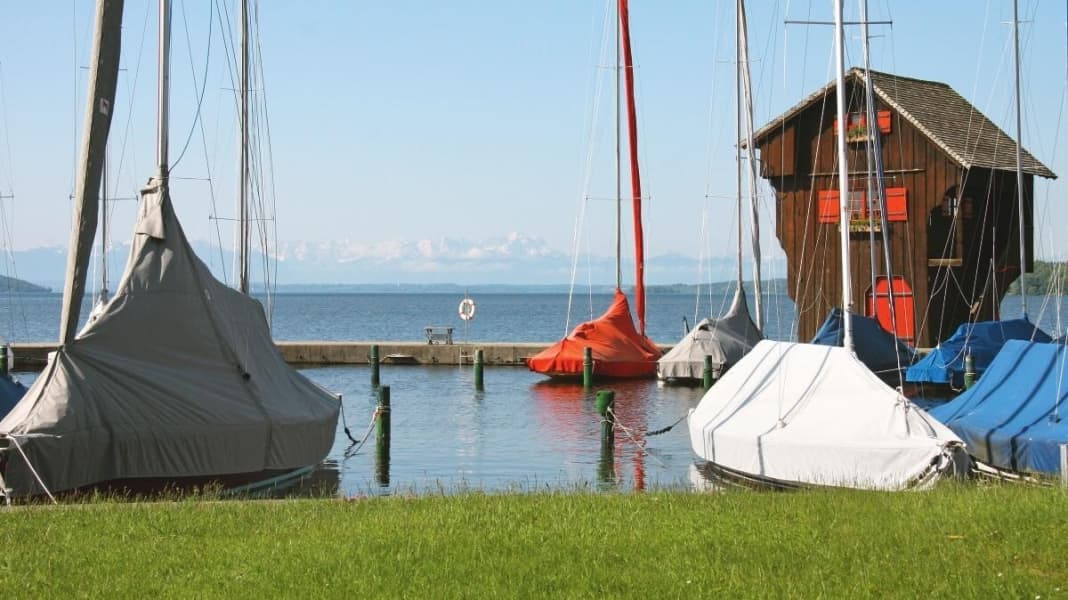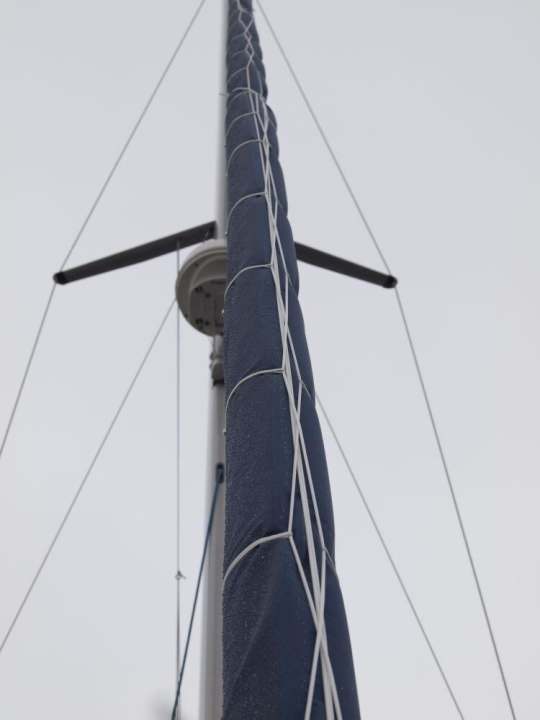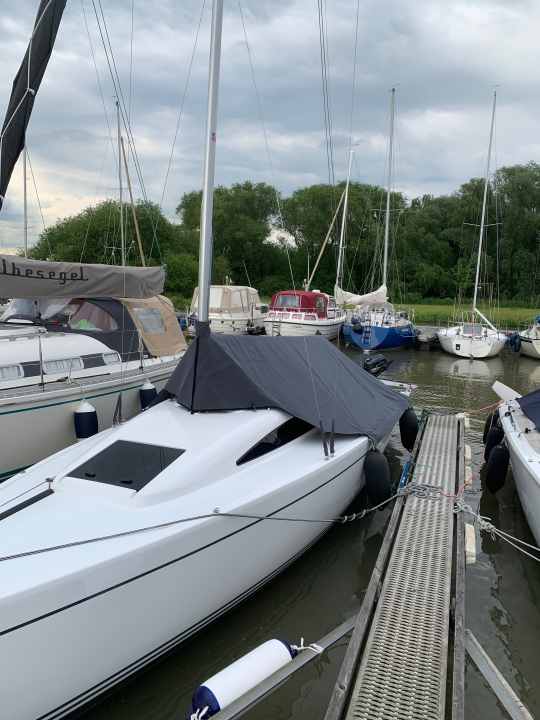
A day trip at Easter is often enough to give you a sunburnt face. But who is thinking about the boat at that moment? Who knows that the yacht doesn't just get sun at the weekend, but around 180 days a year? That it is outside 24 hours a day? The same applies to sailing boats as to people: Prevention increases the service life.
UV radiation is also getting stronger in northern regions. An annual increase of around one per cent looks small on paper, but has noticeable consequences: Plastics become brittle, paints weather faster and fabrics age more quickly. Ten per cent more radiation per decadeon sunny summer days, the exposure is now comparable to the Mediterranean. It is understandable that clear coats on the hulls and decks of classic yachts fail earlier today than they did a few years ago. However, some owners overdo it and apply a customised mini-coating to every hat. This makes packing the boat a procedure that takes hours, and the protective effect of such measures is minimal.
In the first part we showed what is important when it comes to protecting the crew from the sun. This second part is about how the boat can be protected against the UV rays that can damage its materials. The Search for suitable awnings is a recurring problem for sailors. We have analysed dozens of solutions - from sunshades tucked into the wipe to high-tech tarpaulins. You can download the test results here.
Protecting ropes - but how?
What was brightly coloured when new is often just a pale piece of rope after two seasons. However, the colours of a rope are only the least important parts that fade under the everlasting sunlight. Much less obvious is the gradual loss of strength as the fibres age and become brittle.
High-tech fibres such as Vectran, Aramid (Kevlar) or PBO (Zylon) are particularly affected; for this very reason, the latter is now only rarely found in the catalogues of rope manufacturers. This fibre loses most of its strength after just a few weeks. Aramids still manage to last a good season before they lose 50 per cent of their load-bearing capacity. Sheets with Kevlar in the cover should be deliberately protected from unnecessary UV exposure.
One solution could be bags that protect the sheets from the sun, at least in the cockpit. For all ropes that can be easily pulled up again and are not needed for the foreseeable future anyway, it is advisable to dismantle them quickly before leaving the boat for a longer period of time.
Already weak after one season: Aramid then only has 50 per cent of its strength left
Sheets and halyards made of polyester and Dyneema are generally more UV-resistant. They usually reach the end of their service life mechanically before daylight has had a critical effect on their strength. Nevertheless, the light causes the rope to harden and the fibres of the sheath become grey and brittle. Polyester-based ropes are still the better choice in terms of durability.
The sails of a yacht are not only wind and sun catchers. However, the fibres are primarily designed for tensile loads. At the latest First UV damage to be expected after five yearsWithout proper protection, this will happen much faster. The first signs are disintegrating seams, followed by breakages in areas subject to greater mechanical stress. With furling headsails, it is always the leech that determines the service life because it is exposed to the sun even when furled.
Protection by tarpaulins

Rule of thumb: the thicker the yarn and the heavier the fabric, the better the protection against harmful UV radiation.
There is a simple trick to preserving your expensive wardrobe: spread another layer of fabric over it to protect it. Tarpaulins for foresail and mainsail should be available on every boatas long as the cloths are not completely removed after sailing and laid below deck. There are also doublings or protective colours for furling headsails. However, the effect is not as long-lasting as a cover made of strong cloth.
Wood and metal: when does protection make sense?
A cover for the stainless steel winch? This is more likely to deter spontaneous thieves than to extend the service life of the winch. Plastic blocks, hatches, windows or scoops would be more necessary. Plastics lose their plasticisers over time and become brittle. Then the handles of the lever clamps break or a block loses its disc. A cover on the expensive winch may look funny, but it is absolutely superfluous for its durability. The situation is completely different with the lines that are to be used and operated on these very winches - they are by far the most sensitive objects on deck and should enjoy the greatest possible protection. The only solution: a complete tarpaulin (albeit an expensive one).
The deck also benefits from this in any case, regardless of whether it is teak or plastic. Wooden decks have their own rules anyway. An unpainted wooden deck, dry and dirt-free, may turn grey, but it can never be destroyed by sunlight. However, it can change colour - some observers may find this less attractive than at the boat show. It becomes more complex when the wood is treated with varnishes, oils or resins. In this case, the sun can have a destructive effect, causing varnishes to crack and epoxies to yellow. Therefore, if you have large wooden areas on board, you can save yourself a lot of maintenance work by covering these areas with a tarpaulin.


